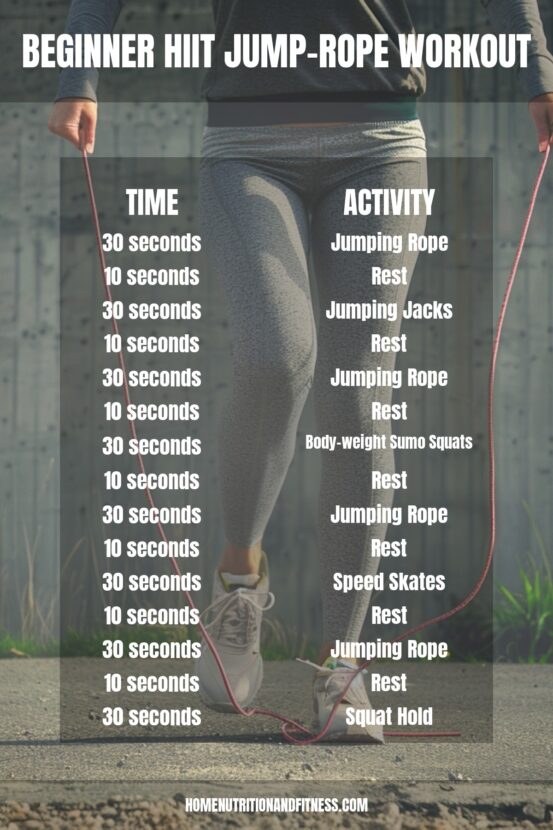Looking for a quick, effective workout to burn fat? Look no further than a high-intensity jump rope routine. Studies show that short, intense workouts are better for fat burning than long, steady ones.
High-Intensity Interval Training (HIIT) has gained popularity for its ability to boost endurance and melt away stubborn fat. HIIT workouts, like jump rope sessions, continue burning calories even after you’ve finished exercising.
Jump rope workouts challenge your body and boost metabolism. They’re flexible, portable, and can target multiple muscle groups. Plus, they’re gentler on your joints compared to jogging.
Why jump rope? It’s versatile, inexpensive, and packs a punch in a short amount of time. With just 30 minutes, you can torch over 300 calories and strengthen your core, triceps, and shoulders.
Why not try this quick 10-minute Beginner Jump-Rope Workout?

As you improve, consider using a heavier rope for more muscle engagement.
Or you can try this 20 minute Jump Rope HIIT workout from the Jump Rope Dudes:
Jumping rope takes practice, but once mastered, it’s a powerful tool for burning fat and boosting overall fitness. So grab a rope and get ready to sweat!
Mastering the Jump Rope
Jumping rope takes coordination — especially if you want to try more advanced jumping techniques like double-unders, crossovers, and traveling jumps.
“If you want to learn tricks, like we say, ‘stack those bricks,’” says Steve Williams of Jump Rope Dudes. “If you can’t jump rope for one minute straight, you aren’t ready to learn double-unders.”
If you’re new to jumping rope, start with the basic jump and boxer skip.
Basic Jump: Stand tall with knees slightly bent. Keep your elbows in close to your body, arms bent 90 degrees, and hands pointing out from your hips while holding the rope handles. Jump with both feet and use your wrists to power the jump rope. Stay up on your toes and keep a slight bend in your knees.
Boxer Skip: Shift your weight from one foot to the other as the rope passes.
When you’ve got jumping and skipping down, try these:
Traveling Jump: “Skip” forward, backward, and side to side while maintaining the jump.
Double-Under: Speed up the turnover of your wrists — without jumping faster or higher — to allow the rope to pass under your feet twice for each jump.
Crossovers: Cross your arms in front of your body on each jump.







